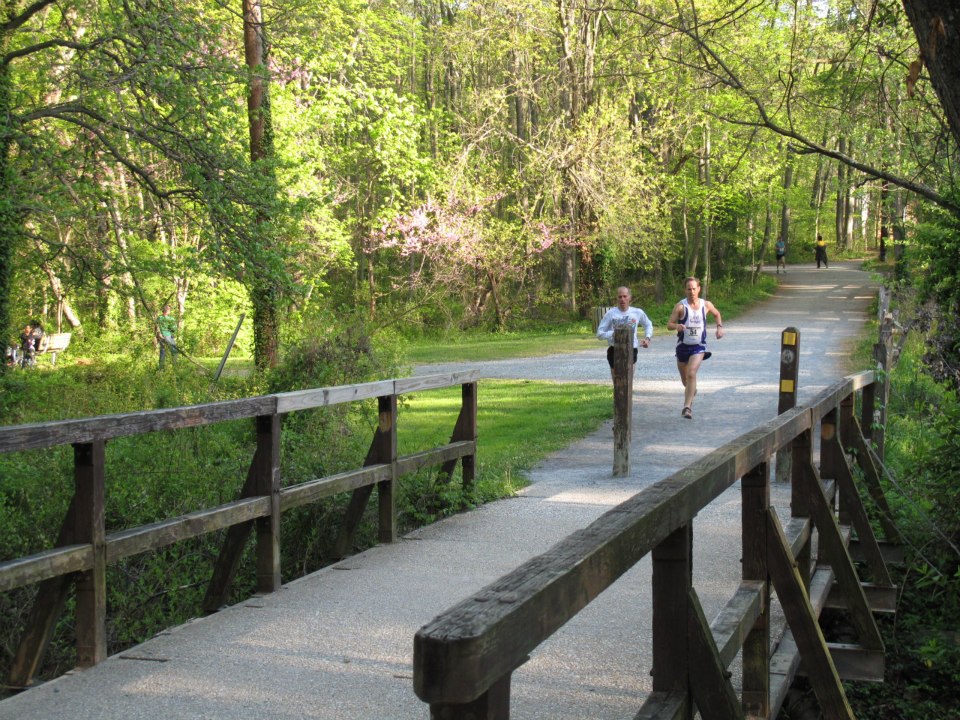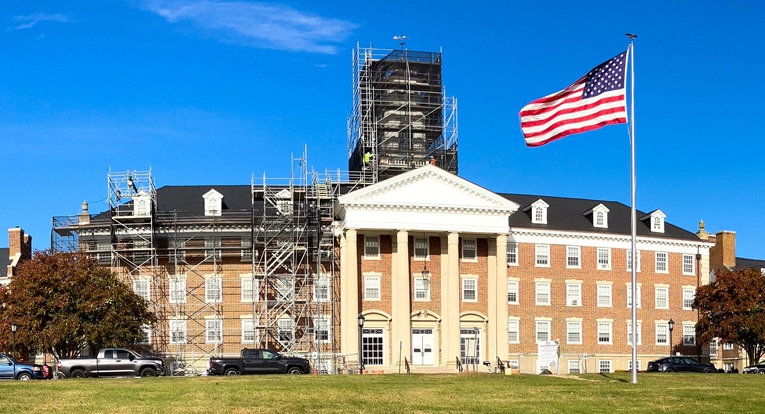The wonderful photo of the Greenbelt Lake trail in autumn glory by Melanie Gaschick in the November 5 issue got me to thinking how lucky it was that the trail got built in 1963 and the debt of gratitude Greenbelters owe to those who got it done, particularly Public Works Director Albert “Buddy” Attick and then-mayor Francis White. The city built the trail, as well as the lake peninsula, without budgeted funds due to Buddy’s resourcefulness and White’s urgings and cooperation.
At that time, Lakeside had only recently been developed by a cooperative of residents. The co-op built the street and installed utilities. Each lot owner was responsible for the design and construction of the home built on it. While many homes already had been built, there were still vacant lots. Also, construction had just begun on the Bresler-Reiner development – the Lakecrest subdivision, an extension of Lakeside Drive with homes on Maplewood, Olivewood and Pinecrest Courts.
Most residents then lived in Greenbelt Homes, Inc. (GHI). Established residents were concerned that the new Lakesiders would take over the shoreline of Greenbelt Lake, which was a part of the park dedication. They were also concerned that they would lose their ability to walk around the lake, even though along the side with new homes there was only a footpath.
The new residents with lake-view properties were not keen on having a public path behind their homes. Who wants strangers in your backyard? Council was concerned that if the city did not establish a defined trail soon, it might never happen.
Although White was a resident of one of those lakeview homes, he pushed city staff to build the path. The problem was, there was no money budgeted to do it. A second problem was that where Gaschick stood to take the photo there was only a narrow footpath on the steep side of a hill, suitable mostly for nimble kids and billy goats. A wide path there required building it above the steep slope where land was more level. However, part of that land was privately owned by two families. One was the Whites, the other the Davises. Fortunately, they were both amenable to granting the city revocable easements for the land needed. In return, they asked the city to install a wood rail fence along the path behind their homes. That was doable and was done. Many years later the city purchased the land granted by easements, so the trail is now permanently sited.
The next hurdle was constructing the path. There already existed government-built paths from the bay end of the lake to the dam, across the dam and along the north side. They needed to complete the circle. The city didn’t have a budget, but it did have manpower and some equipment. Buddy and I walked the lakeshore, figuring out where a pathway could be built that could accommodate maintenance vehicles without destroying significant trees. Surprisingly, only a very few mature trees had to be taken down, the rest being scrub growth.
Buddy grew up in a home that became part of the city. He worked as a security guard during the construction of Greenbelt. Next, he became a mounted city police officer, patrolling the streets and woodlands. Buddy knew every nook and cranny of Greenbelt. He was also gregarious and knew most people who lived and worked here. He learned by watching and doing.
The small Public Works crew then consisted mostly of men raised on farms, some locally and many from Appalachia. Living during a depression, these men knew how to get jobs done that needed doing without expensive equipment or contractors, relying on their own brains and brawn.
The city owned a bulldozer, operated by Charlie Dodson and used at the then city landfill. Charlie and the crew were able to clear the land and grade the new trail, a part of which is seen in the photo.
But there were other problems at either end. First, a path had to be built from Braden Field to the east end of the lake to bring in equipment. That meant fording a small stream. Steppingstones were put in place for pedestrian use. Also, at the lake’s end the path had to cross two streams to get from one side to the other. The one coming from Boxwood Village and Woodland Hills could be handled by laying large concrete pipes for short distances, which was done as part of the peninsula construction. The second much-larger stream from Braden Field collected water from much of the Greenbelt Homes, Inc. (GHI) housing cooperative. It needed to be bridged with a structure big and strong enough to support maintenance vehicles.
Buddy’s crew built concrete piers on either side and set steel beams across. He still needed a strong surface. Springhill Lake (now Franklin Park) apartments were then under construction. Each apartment had a balcony. The balcony floors were prefabricated rectangles of reinforced concrete. Some of these floors had visual imperfections making them undesirable for building use but still structurally sound. Buddy managed to get some of them donated for the bridge flooring. The crew installed guard rails.
At the bay end, although a pathway once existed, the installation of a sanitary sewer line several feet above ground level where the pathway had been was another obstacle. Fortunately, the Lakecrest development had excess dirt from its grading and managed to cover the pipe with it. That still left a gap for a small stream entering the lake and more concrete pipe had to be laid. The dirt covering the sewer pipe had to be compacted and graded and gravel laid for the path.
When all of this was accomplished, Greenbelt residents were able to take a pleasant 1.1-mile walk around the lake. Then Public Works built paths from the ends of the three courts in the Lakecrest subdivision, another connecting path from Lakeside Drive at the new bridge and another from Lakecrest Drive in Charlestowne Village, providing added public access to the lake trail.
Trickiest of all was building an asphalt path from Ridge Road to Maplewood Court for use by GHI residents for lake access. Because of the steep slope, gravel would not work; it would wash down the hill. The asphalt had to be rolled and compacted. The roller machine was not powerful enough to climb the steep grade. So it rolled its way down the hill, was loaded onto a truck trailer and hauled back to Ridge Road to make another run. It was not the best paving job but good enough.
Could this no-budget construction be done today? I don’t think so. First, you would need to hire planners, engineers and attorneys to get the necessary approvals for compliance with regulations subsequently adopted. You would probably need to own the right-of-way, requiring either a cash purchase or a legal eminent domain proceeding. I am not aware of any leftover balcony floors in Greenbelt, so the bridge would have to be designed and built from scratch; also, modern regulations would probably require that.
On the plus side, the city might now be able to obtain state or federal grant monies to help pay the cost. Nearly 60 years ago, grant funds were nonexistent.
James Giese was the new Greenbelt city manager in 1963.




